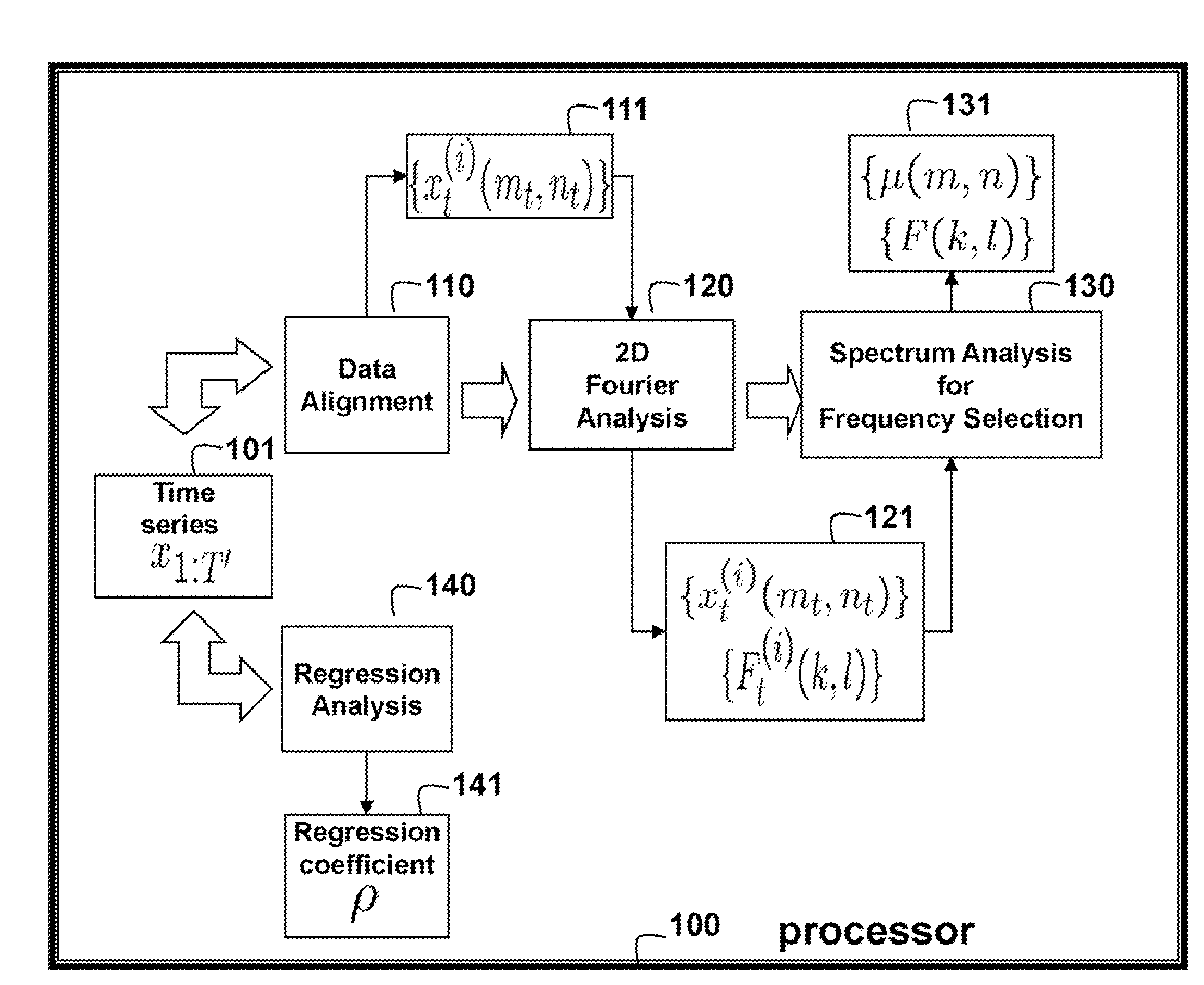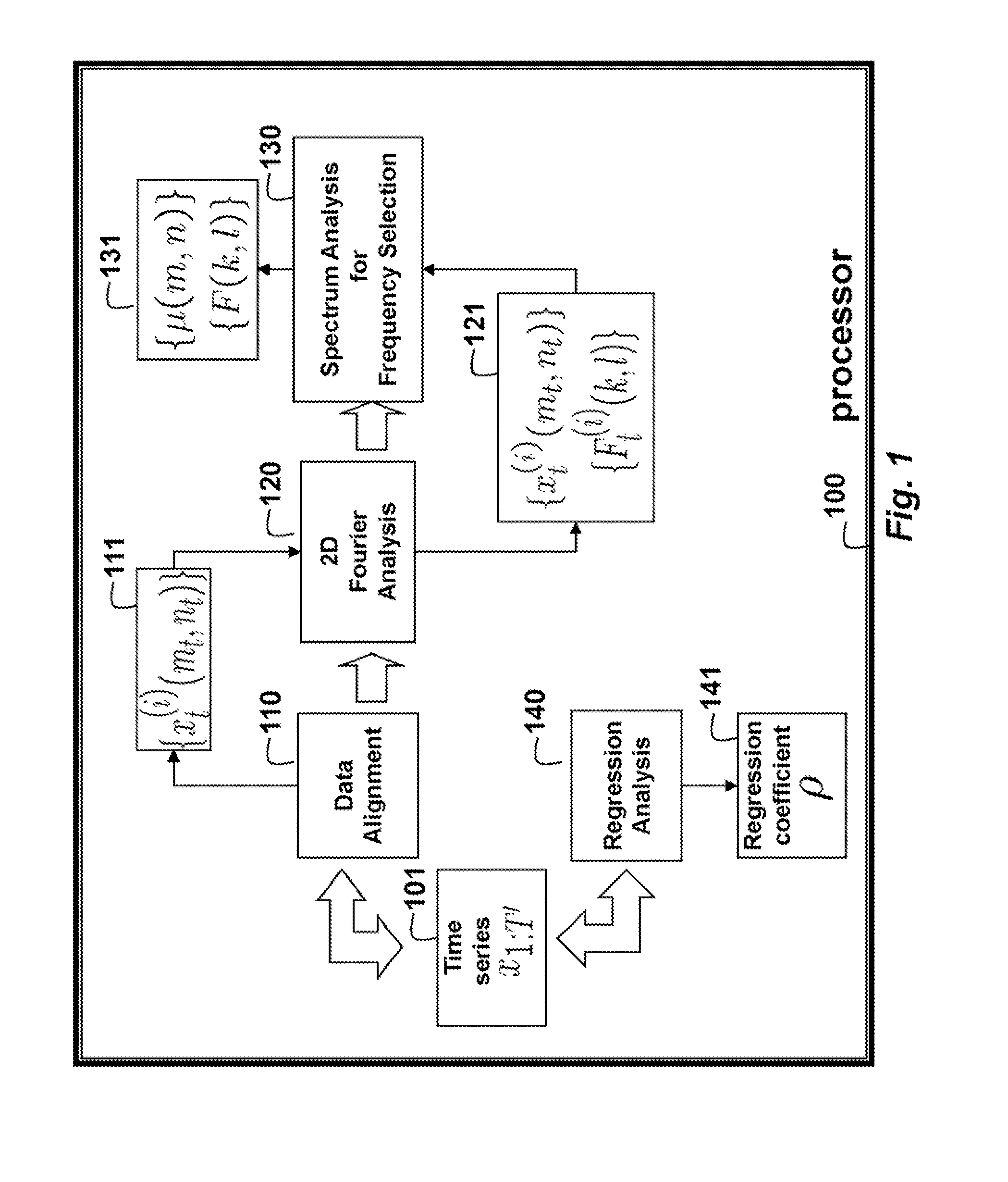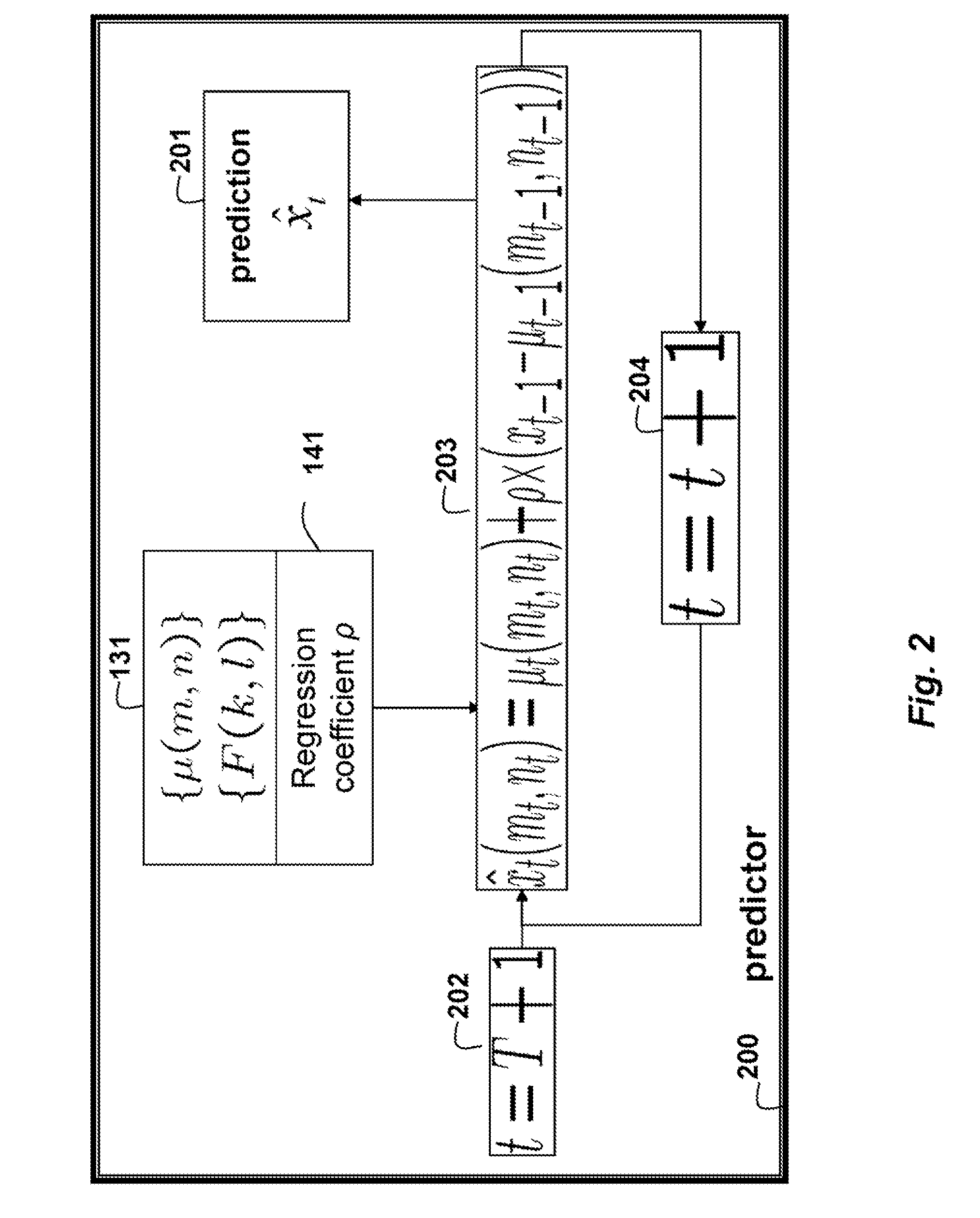Method for Predicting Outputs of Photovoltaic Devices Based on Two-Dimensional Fourier Analysis and Seasonal Auto-Regression
- Summary
- Abstract
- Description
- Claims
- Application Information
AI Technical Summary
Benefits of technology
Problems solved by technology
Method used
Image
Examples
Embodiment Construction
[0021]As shown in FIG. 1, the embodiments of our invention provide a method for predicting an output of a photovoltaic (PV) device. The method operates on historical time series data 101.
[0022]Statistics of the time series data represents contributions of spectrum frequencies to PV generations. Frequencies 121 of the time series data are obtained by a Fourier analysis 120.
[0023]The Fourier analysis explicitly takes into account daily and annual variations in the time series data. Therefore, the data are aligned 110 two-dimensionally (2D) according to the days in a year and hours in a day, and Fourier transformed frequencies are obtained.
[0024]The 2D Fourier analysis reveals how frequencies in daily and annual variations impact the PV generations in a quantitative manner.
[0025]Furthermore, by using spectrum analysis 130 on the Fourier transformed data, we determine the frequencies 131 that substantially contribute to the output of the PV device.
[0026]Thus, the dominating frequencies ...
PUM
 Login to View More
Login to View More Abstract
Description
Claims
Application Information
 Login to View More
Login to View More - R&D
- Intellectual Property
- Life Sciences
- Materials
- Tech Scout
- Unparalleled Data Quality
- Higher Quality Content
- 60% Fewer Hallucinations
Browse by: Latest US Patents, China's latest patents, Technical Efficacy Thesaurus, Application Domain, Technology Topic, Popular Technical Reports.
© 2025 PatSnap. All rights reserved.Legal|Privacy policy|Modern Slavery Act Transparency Statement|Sitemap|About US| Contact US: help@patsnap.com



